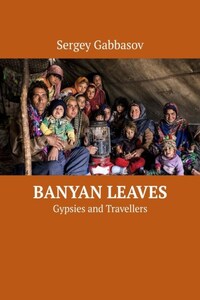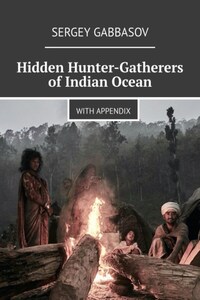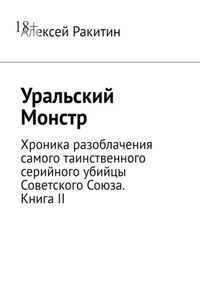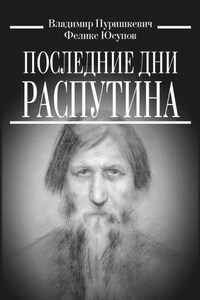Gypsies are the people originated from Central and North regions of Indian subcontinent. The word “Gypsy” is an exonym, like “tsigane”, “gitano” and many other names connected with Greek “athinganos” (“untouchable”), which based on “athinganoi” – the name of a Christian sect with whom gypsies were associated. The English term “Gypsy” originates from the Middle English “Gypcian”, short form of “Egipcien”, which ascend from Greek “Aigyptioi” meaning “Egyptian”. This name was given because of the common belief that gypsies are from Egypt. Self-designation varies but “Roma” is the most common.
Who were the ancestors of the Gypsies? Genetics proved that modern gypsies are descendants of the comparatively small and homogeneous group which has emigrated or been captured from South Asia (North-West India and North Pakistan) (Martínez-Cruz et al. 2016; Gresham et al. 2001; Kalaydjieva et al. 2001). Linguistic analyzes of self-designation and language make a theory that “Roma” originate from “Domba” (“Dom”) people (Matras 1995).
It is almost impossible to say who the “Domba” were at the period when the ancestors of the “Roma” left India, but now this is a widespread ethnic group scattered across India and Nepal. The term “Domba” may be connected with the analogs in Indian Hindu and Buddhist literature for a segregated and enslaved population. It can also be associated with “damara” (Sanskrit term for the “drum”).
Nowadays “Dom” can be found in Himachal Pradesh (former hunter-gatherers indigenous groups), Orissa, Uttar Pradesh and Nepal where they are agricultural workers, basket weavers and small scale agriculturalists. They speak Indo-Aryan and Dravidian languages and show very few connections with modern or ancient “Roma” people except low social level. Very few groups of modern “Dom” have any elements of semi-sedentary lifestyle, but some former hunter-gatherers groups of honey-hunters in Nepal and Himachal Pradesh. I’ve been in villages in Nepal (Far West and Chitwan regions) and Himachal Pradesh (Dharamsala region) inhabited by different ethnic groups (“Tharu” and “Magar” in Chitwan, “Kangri” in India) but in “Dom” cast division. In all regions they were small-scale agriculturalists, with spear-fishing of “Tharu” and honey-hunting of “Kangri”.
There are several nomadic gypsy-like groups in modern Europe who have no connections with “Roma” (“Yenish”) or absorbed a few amount of “Roma” in recent times (“Pavee”, “an lucht siúil” in Irish, or “Irish Travelers” in English). Some of not well-received names of Travelers is “Pikey”. It is a slang word, used in England, Scotland, Ireland, and Wales to refer to Irish or Scottish “Travelers” and gypsies. In a pejorative sense it means “a lower-class person”, perhaps “coarse” or “disreputable”. In this case it is very important to say some words about modern nomadic gypsy-like groups of Rajasthan.
Actually, they are not pure “nomadic”, because “nomadism” based upon livestock’s pasture and non-sedentary lifestyle of nomads is strongly non-random and systematically necessitated. Rajasthani gypsy-like groups can wander very randomly, they have no nature or animal caused “seasons” of movements, so they are “wandering”, “non-” or “semi-sedentary groups” (or “groups with flexible sedentarism”).
Trying to find any connections and relationships between modern semi-sedentary groups and castes of Rajasthan with the gypsies is completely mistakable. What should we based on? Languages and self-designations are different. Occupations and lifestyles? But how can we compare “Roma” with the modern non-sedentary peoples and groups like “Sansi” or “Banjara” (both are wandering traders)? Other gypsy-like groups of Rajasthan demonstrate higher percent of sedentarism (like castes of professional singers and musicians “Langa” / “Manganiyar”) and change their place of living very seldom (for example occasionally to some religious festivals or fairs like Pushkar camel fair). Non-sedentary wandering blacksmiths “Gadia Lohar” (“gadi” means “cart”, and “lohar” is a “blacksmith”) may consist of different ethnic groups.
Gypsies of Middle East call themselves “Dom” and their language is “Domari”. Recent researches suggest that the differences between “Domari” and “Romani” are significant enough to treat them as two separate languages. The “Dom” and the “Roma” are therefore likely to be descendants of two different migration waves from the Indian subcontinent, separated by several centuries.
As we’ve known from publications of Nazarov (Назаров 1980) and Oranski (Оранский 1983), there were many waves of arriving of gypsies and gypsy-like groups in Central Asia, and now there are (or were in recent past time) “Mughati tubzhon” (“local gypsies”), “Hindusthoni Mughat” (“Indian gypsies”), “Agha” (gypsies from Kashgar), “Mazang” and “Kavol” (probably from “city of Kabul”, wandering cosmetics and haberdashery traders), “









